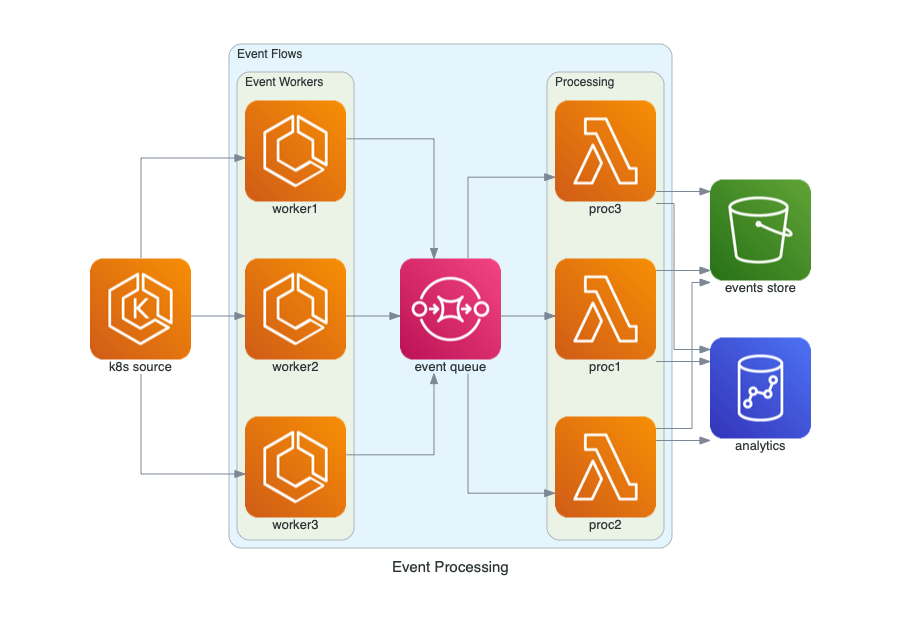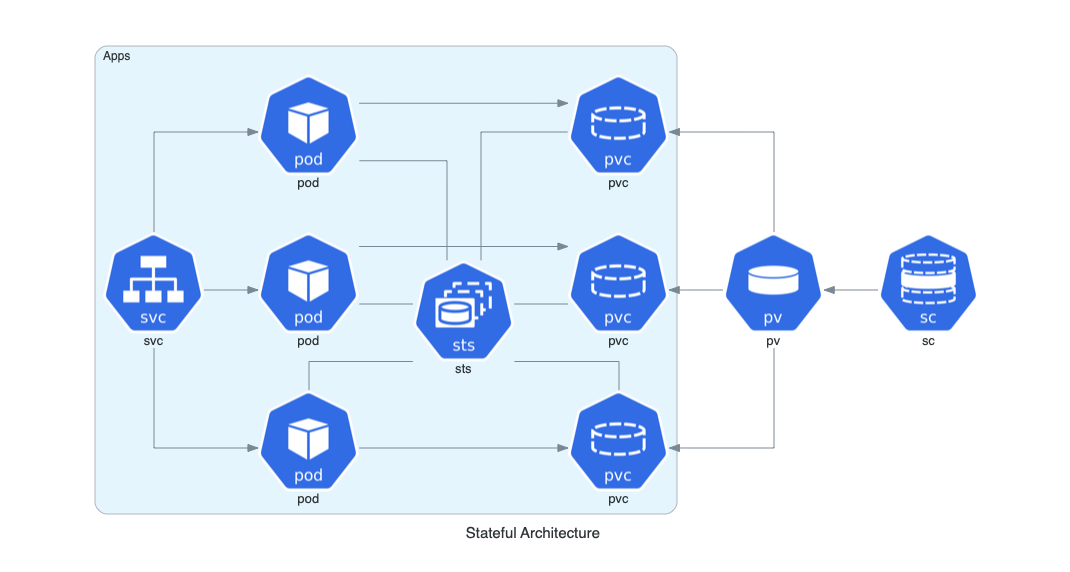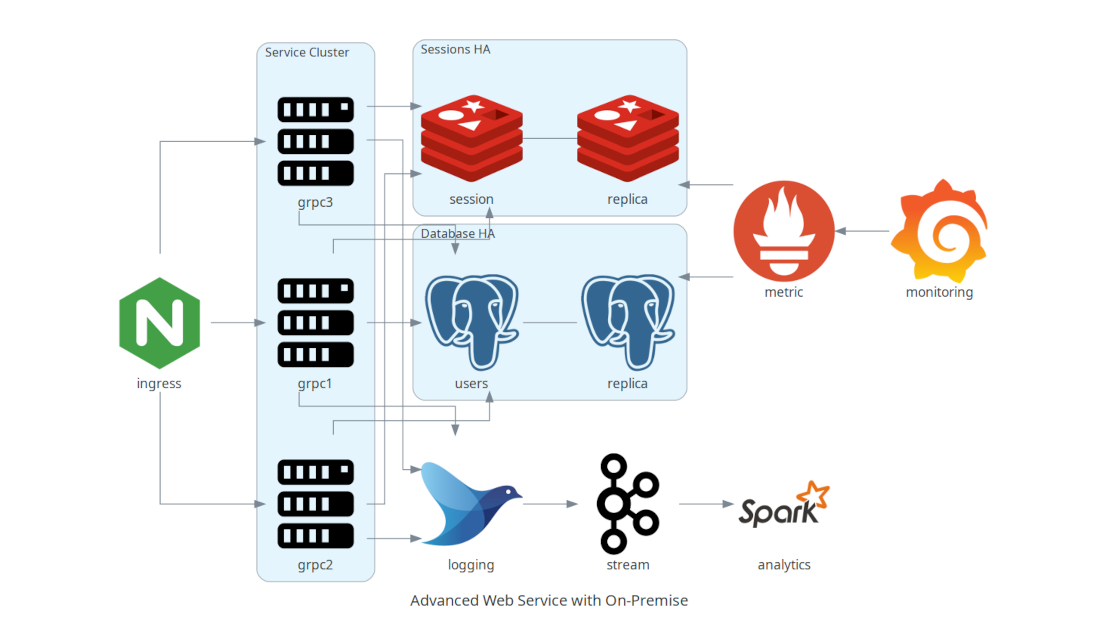mirror of https://github.com/mingrammer/diagrams
You can not select more than 25 topics
Topics must start with a letter or number, can include dashes ('-') and can be up to 35 characters long.
94 lines
6.3 KiB
94 lines
6.3 KiB

|
|
|
|
# Diagrams
|
|
|
|
[](/LICENSE)
|
|
[](https://badge.fury.io/py/diagrams)
|
|

|
|

|
|
[](https://www.tickgit.com/browse?repo=github.com/mingrammer/diagrams)
|
|

|
|
|
|
<a href="https://www.buymeacoffee.com/mingrammer" target="_blank"><img src="https://www.buymeacoffee.com/assets/img/custom_images/orange_img.png" alt="Buy Me A Coffee" style="height: 41px !important;width: 174px !important;box-shadow: 0px 3px 2px 0px rgba(190, 190, 190, 0.5) !important;" ></a>
|
|
|
|
**Diagram as Code**.
|
|
|
|
Diagrams lets you draw the cloud system architecture **in Python code**. It was born for **prototyping** a new system architecture design without any design tools. You can also describe or visualize the existing system architecture as well. Diagrams currently supports main major providers including: `AWS`, `Azure`, `GCP`, `Kubernetes`, `Alibaba Cloud`, `Oracle Cloud` etc... It also supports `On-Premises` nodes, `SaaS` and major `Programming` frameworks and languages.
|
|
|
|
**Diagram as Code** also allows you to **track** the architecture diagram changes in any **version control** system.
|
|
|
|
> NOTE: It does not control any actual cloud resources nor does it generate cloud formation or terraform code. It is just for drawing the cloud system architecture diagrams.
|
|
|
|
## Providers
|
|
|
|

|
|

|
|

|
|

|
|

|
|

|
|

|
|

|
|

|
|

|
|

|
|

|
|

|
|

|
|

|
|

|
|

|
|
|
|
## Getting Started
|
|
|
|
It requires **Python 3.9** or higher, check your Python version first.
|
|
|
|
It uses [Graphviz](https://www.graphviz.org/) to render the diagram, so you need to [install Graphviz](https://graphviz.gitlab.io/download/) to use **diagrams**. After installing graphviz (or already have it), install the **diagrams**.
|
|
|
|
> macOS users can download the Graphviz via `brew install graphviz` if you're using [Homebrew](https://brew.sh).
|
|
|
|
```shell
|
|
# using pip (pip3)
|
|
$ pip install diagrams
|
|
|
|
# using pipenv
|
|
$ pipenv install diagrams
|
|
|
|
# using poetry
|
|
$ poetry add diagrams
|
|
```
|
|
|
|
You can start with [quick start](https://diagrams.mingrammer.com/docs/getting-started/installation#quick-start). Check out [guides](https://diagrams.mingrammer.com/docs/guides/diagram) for more details, and you can find all available nodes list in [here](https://diagrams.mingrammer.com/docs/nodes/aws).
|
|
|
|
## Examples
|
|
|
|
| Event Processing | Stateful Architecture | Advanced Web Service |
|
|
| ------------------------------------------------------------ | ------------------------------------------------------------ | ------------------------------------------------------------ |
|
|
|  |  |  |
|
|
|
|
You can find all the examples on the [examples](https://diagrams.mingrammer.com/docs/getting-started/examples) page.
|
|
|
|
## Contributing
|
|
|
|
To contribute to diagram, check out [contribution guidelines](CONTRIBUTING.md).
|
|
|
|
> Let me know if you are using diagrams! I'll add you in showcase page. (I'm working on it!) :)
|
|
|
|
## Who uses it?
|
|
|
|
[Apache Airflow](https://github.com/apache/airflow) is the most popular data workflow Orchestrator. Airflow uses Diagrams to generate architecture diagrams in their documentation.
|
|
|
|
[Cloudiscovery](https://github.com/Cloud-Architects/cloudiscovery) helps you to analyze resources in your cloud (AWS/GCP/Azure/Alibaba/IBM) account. It allows you to create a diagram of analyzed cloud resource map based on this Diagrams library, so you can draw your existing cloud infrastructure with Cloudiscovery.
|
|
|
|
[Airflow Diagrams](https://github.com/feluelle/airflow-diagrams) is an Airflow plugin that aims to easily visualise your Airflow DAGs on service level from providers like AWS, GCP, Azure, etc. via diagrams.
|
|
|
|
[KubeDiagrams](https://github.com/philippemerle/KubeDiagrams) is a tool to generate Kubernetes architecture diagrams from Kubernetes manifest files, kustomization files, Helm charts, and actual cluster state. [KubeDiagrams](https://github.com/philippemerle/KubeDiagrams) supports all Kubernetes built-in resources, any custom resources, and label-based resource clustering.
|
|
|
|
## Other languages
|
|
|
|
- If you are familiar with Go, you can use [go-diagrams](https://github.com/blushft/go-diagrams) as well.
|
|
|
|
## License
|
|
|
|
[MIT](LICENSE)
|